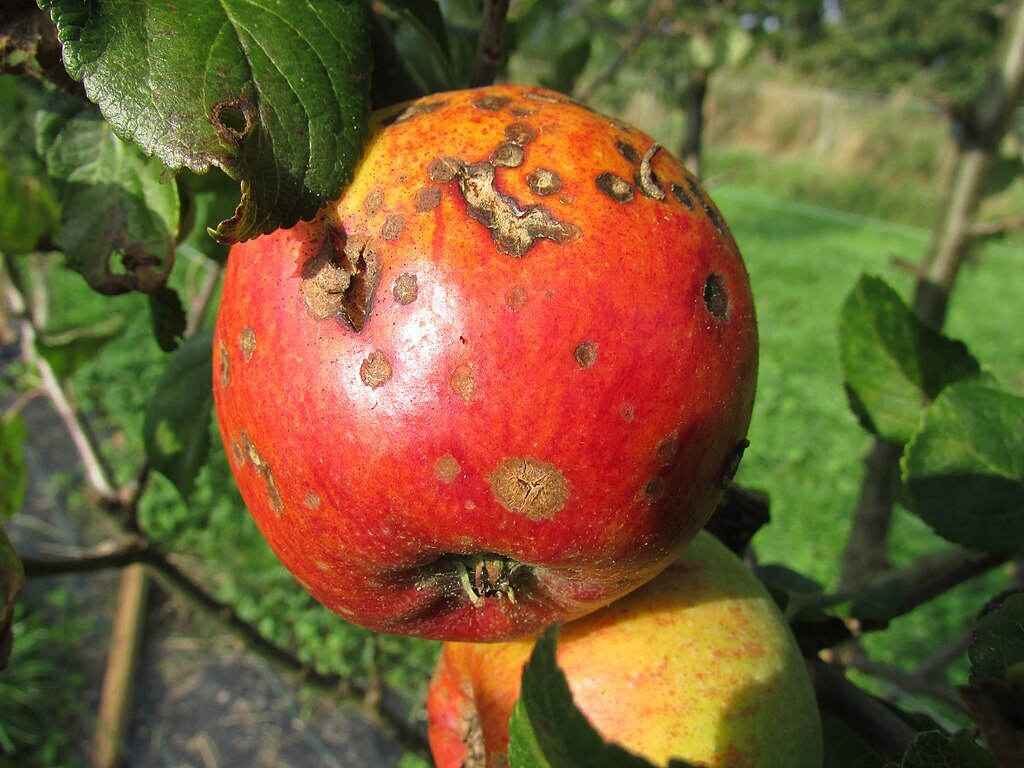


When trees get sick, homeowners get stressed. It can be really frustrating to see your beloved New England trees decline due to a tree disease. Unfortunately, there are a number of different tree diseases that thrive here in the Seacoast region.
One of those tree diseases is Apple Scab, a fungal disease that affects Crabapple Trees and other plants of the Rose family. This disease can damage the overall health and appearance of a landscape.
In this article, we’ll share some of the important things that you ought to know about Apple Scab. Having a better understanding of this disease can help you make the best decisions if you wind up being faced with it on your property.
Jump to:
What is Apple Scab?
What Does Apple Scab Look Like?
Understanding the Apple Scab Disease Cycle
How to Get Rid of Apple Scab
Choosing Plant Health Care in Southern NH, Northeastern Massachusetts, and Southern Maine
Apple Scab is a fungus that can attack both wild and Cultivated Apple and Crabapple Trees (two very common trees here in New England). It can also infect other plants from the Rose family. Apple Scab is caused by the fungus Venturia inaequalis.
In ornamental trees, the leaf loss and lesions caused by this disease can make trees unsightly.
This disease can become most severe during periods of wet weather (which promote fungal growth). If severely infected, your tree’s leaves may become dwarfed or twisted…or start to fall off entirely. It’s also common for the tree’s fruit to become infected.
Lesions (or “scabs”) are the primary Apple Scab symptom. Typically, these first appear on the leaves surrounding the flower buds. But as Apple Scab spreads, the lesions can become more pronounced.
You might see yellow, greenish, or brown spots on the leaves and the fruit of the tree. Spots can eventually turn black.
The Apple Scab disease cycle starts with fungal spores overwintering in infected leaves that fall to the ground. The spores can be released in the wind and rain during the spring season and carried to other plants..jpg?width=1200&height=785&name=CC%20-%20Venturia%20Inaequalis%20(Apple%20Scab).jpg)
Then, new spores begin to grow and spread on an infected tree. When wet conditions persist, infections can continue to grow and spread, continuing the cycle.
Spotting Apple Scab symptoms early on is important. As you might imagine, tree diseases are most easily managed in their early stages. Any time that you can get ahead of a problem before it becomes more severe is optimal. Making a proper diagnosis is important as different diseases can have different treatments.
Sometimes tree disease symptoms do mimic those of other problems (like pests or even environmental stressors), so you want to make sure that you’re treating the correct problem.
Treating Apple Scab is best done with fungicide controls. These treatments may need to be applied multiple times during the growing season, especially before prolonged periods of rain and wet conditions.
Proper pruning also plays an important role in the control of diseases like Apple Scab since it creates airflow which helps dry out the tree and prevent the spread of fungal spores.
Diseased branches and leaves can also be pruned away. It’s important that these diseased parts are removed to prevent spores from overwintering and restarting the apple scab disease cycle.
It’s important to work with a tree care professional who has the horticultural knowledge and experience to make the best choices for your New England trees.
At Seacoast Tree Care, we take the health and care of trees quite seriously. We view ourselves as trees’ guardians and believe that it is our role to help nurture and preserve their health. We provide tree care in the Seacoast region of Southern New Hampshire, Southern Maine, and Northeastern Massachusetts.
As the guardians of trees, we want to be able to help homeowners who might be dealing with tree diseases like Apple Scab.
If you are already dealing with a tree disease, we can determine the best course of action that should be taken. But if you’re just looking to prevent tree diseases (we love your proactive attitude), we also have a plant health care program that can help.
While some tree diseases can’t be prevented, it’s important to recognize that a healthier tree faced with a disease is going to fare better than one which is already struggling.
By choosing to work with a tree care professional that has significant experience, training, and skill (including horticultural expertise), you can feel confident that the best decisions are being made for your trees.
That means you’ll get peace of mind that your New England landscape is in good hands.
Ready for healthier trees at your Southern NH, ME, or MA home? Request your consultation and have your New England trees evaluated. By making a wise choice, you can remove and prevent apple scab.
Image Sources: apple with apple scab, apple scab leaf, apple scab spores